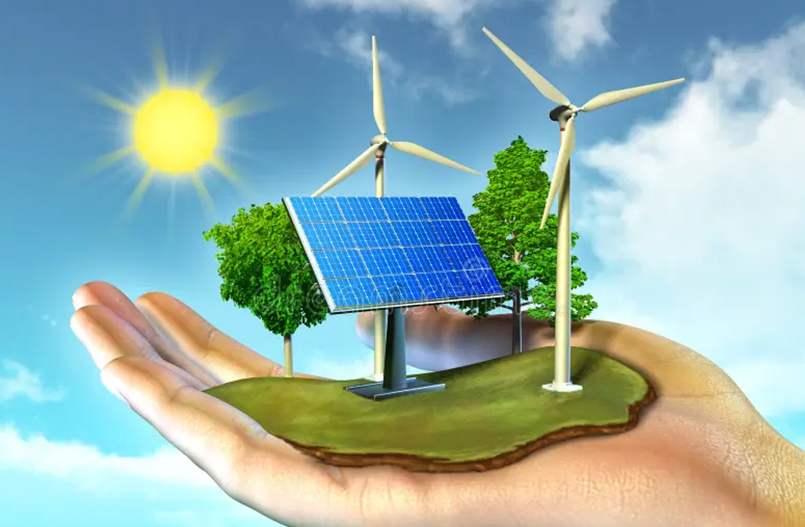In the modern age, the global community faces a dual challenge: the ever-increasing demand for energy and the pressing need to combat climate change. Fortunately, renewable energy has emerged as a beacon of hope in addressing both of these challenges simultaneously. Renewable energy sources, such as solar, wind, hydro, and geothermal power, offer a sustainable path forward, reducing greenhouse gas emissions and promoting energy independence. This article explores the significance of renewable energy in creating a more sustainable future.

In the modern age, the global community faces a dual challenge: the ever-increasing demand for energy and the pressing need to combat climate change. Fortunately, renewable energy has emerged as a beacon of hope in addressing both of these challenges simultaneously. Renewable energy sources, such as solar, wind, hydro, and geothermal power, offer a sustainable path forward, reducing greenhouse gas emissions and promoting energy independence. This article explores the significance of renewable energy in creating a more sustainable future.
Renewable energy, often referred to as clean energy, derives from sources that are naturally replenished and environmentally friendly. Unlike fossil fuels, which release harmful carbon emissions into the atmosphere when burned, renewable energy sources generate electricity with little to no greenhouse gas emissions. This reduction in emissions is pivotal in mitigating climate change, as the energy sector is one of the largest contributors to global carbon emissions.
One of the most prominent renewable energy sources is solar power. Solar panels convert sunlight into electricity, providing an abundant and inexhaustible energy source. As technology advances, solar panels have become more efficient and affordable, making solar energy accessible to a wider range of consumers. In addition to reducing carbon emissions, solar power systems can save homeowners money on their energy bills, making it an attractive option for both environmental and economic reasons.
Wind energy is another essential component of the renewable energy landscape. Wind turbines capture the kinetic energy of the wind and convert it into electricity. Wind farms, consisting of multiple turbines, can generate significant amounts of clean energy. Wind power is a versatile resource, as it can be harnessed both onshore and offshore, depending on geographical and environmental considerations. It plays a vital role in diversifying energy portfolios and reducing reliance on fossil fuels.
Hydropower, which harnesses the energy of flowing water, has been a renewable energy source for many years. It is a reliable and consistent source of electricity, thanks to the Earth’s water cycle. Large-scale hydropower plants provide electricity to millions of people worldwide, and smaller-scale systems can be implemented in remote areas or communities. However, the construction of large dams can have environmental and social impacts, highlighting the need for sustainable planning and development.
Geothermal energy taps into the Earth’s internal heat, utilizing steam or hot water from underground reservoirs to generate electricity. This source of renewable energy is highly reliable and has a low environmental footprint. Geothermal power plants produce electricity 24/7, making them a valuable asset in the quest for a stable and sustainable energy supply.
In addition to its environmental benefits, renewable energy promotes energy independence and economic growth. By diversifying energy sources, countries can reduce their vulnerability to fluctuations in fossil fuel prices and supply disruptions. Moreover, the renewable energy sector has created millions of jobs worldwide, offering opportunities for economic development and innovation. As technology advances, the cost of renewable energy continues to decline, making it increasingly competitive with traditional fossil fuels.
Transitioning to renewable energy is not without challenges. Energy storage solutions are crucial to ensuring a stable power supply, especially when the sun isn’t shining or the wind isn’t blowing. Battery technologies, such as lithium-ion batteries, are improving rapidly and are essential for storing excess renewable energy for use during periods of high demand. Additionally, upgrading and expanding energy infrastructure to accommodate renewable sources can be costly and complex.
Government policies and incentives play a pivotal role in accelerating the adoption of renewable energy. Many countries have implemented renewable energy targets and subsidies to encourage investment in clean energy technologies. These policies help level the playing field by making renewable energy more competitive with fossil fuels.
In conclusion, renewable energy is a cornerstone of our journey toward a more sustainable and resilient future. Its potential to reduce greenhouse gas emissions, promote energy independence, create jobs, and stimulate economic growth cannot be overstated. While challenges remain, the continued development and adoption of renewable energy technologies are essential for combatting climate change and securing a prosperous future for generations to come. It is imperative that individuals, businesses, and governments work together to accelerate the transition to clean energy and unlock the full potential of renewable resources.
